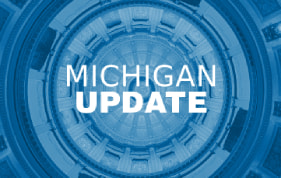This week, our In Focus section reviews the recently announced policy and payment updates from the Centers for Medicare & Medicaid Services (CMS) that will affect Medicare Advantage (MA) and Medicare Part D programs in calendar year (CY) 2025. We also take a look at the CY 2025 Part D Redesign Program Instructions.
Both the rate announcement and program instructions include important technical updates and payment policy changes that will affect MA and Part D plans. CMS previously released a proposed rule in November 2023 that included proposed policy changes to MA and Part D. Health Management Associates, Inc., colleagues are closely monitoring how the final Rate Notice will shape the industry’s approach to the separately proposed policies for supplemental benefits, integrated dual eligible special needs plans (D-SNPs), and encounter data policies among others.
The following are highlights from the CY 2025 Rate Announcement and significant changes CMS made from the Advance Notice released earlier this year.
Payment Impact on MA
CMS estimates that the final ate announcement will lead to a 3.70 percent increase in average payments to MA plans in CY 2025. This reflects the net payment impact of policy changes and updates to MA plan payments relative to 2024 and is the same amount as proposed in the CY 2025 Advance Notice released on January 31, 2024. As a result, MA plans will receive an estimated $16 billion increase in payments for CY 2025, and according to CMS, the federal government is expected to make $500−$600 billion in payments to MA plans in 2025. This reimbursement increase—which include all the various elements affecting MA plan payments, including the MA risk score trend—represents the average payment increase across all MA plans, although the actual impact on each plan will vary.
Effective Growth Rate
The effective growth rate finalized in the CY 2025 rate announcement is 2.33 percent, down slightly from 2.44 percent in the advance notice. The effective growth rate is driven largely by growth in Medicare fee-for-service expenditures, and the CY 2025 Rate Announcement was updated to include program payments during the fourth quarter of 2023. In addition, the technical medical education adjustment has declined from 67 percent in the Advance Notice to 52 percent in the Rate Announcement.
Medicare Advantage Risk Adjustment and Coding
The rate announcement continues to phase in the updated risk adjustment model by blending 67 percent of the risk score calculated using the updated 2024 MA risk adjustment model with 33 percent of the risk score calculated using the 2020 MA risk adjustment model. These revisions to the MA risk adjustment model, which include important technical updates to improve the model’s predictive accuracy, were finalized last year under the CY 2024 Rate Announcement with a three-year phase-in. The Rate Announcement also finalizes that CMS will adopt a new methodology for normalizing risk scores to more accurately address the effects of the COVID-19 pandemic.
Consistent with what the agency proposed in the Advance Notice, in CY 2025, CMS will apply the statutory minimum 5.90 percent MA coding pattern difference adjustment.
Star Ratings
CMS continues work toward implementing the “Universal Foundation” of quality measures—a subset of metrics aligned across public programs. CMS invites stakeholder feedback as it continues to explore adding measures to the Star Ratings, which are components of the Universal Foundation.
For the CY 2025 rate announcement, Star Ratings changes include the types disasters that are included in the adjustment, updates to the non-substantive measure specification, and the list of metrics for inclusion in the MA and Part D improvement measures and Categorical Adjustment Index for 2025 Star Ratings.
Part D Design and Part D Risk Adjustment Changes
The Rate Announcement details several important changes to the standard Part D drug benefit for CY 2025 as required by the Inflation Reduction Act (IRA). These adjustments include eliminating the coverage gap phase from a three-phase benefit (deductible, initial coverage, and catastrophic) and setting the annual cap on patient out-of-pocket prescription drug costs at $2,000. The changes in Part D coverage design will have a significant impact on liability for Medicare beneficiaries, Part D plans, drug manufacturers, and CMS.
CMS also finalized updates to the Part D risk-adjustment model to reflect Part D design changes included in the IRA and to ensure Part D plan sponsors can develop accurate bids for CY 2025. These changes include calibrating the Part D risk model using more recent data years and updating the normalization factor to reflect differences between MA-PD plan and standalone Part D plan risk score trends.
Key Considerations
Overall the final rate notice maintains stability and the opportunity for beneficiary choices in the MA program even as it continues to implement noteworthy changes in risk adjustment. The payment policies finalized in the CY 2025 Rate Announcement will have varying effects across MA plans, with some experiencing larger or smaller impacts in CY 2025. Plans should assess these effects as they prepare their bid submissions for 2025.
In the CY 2025 rate announcement, CMS indicates that the 3.70 percent increase will provide continued stability in beneficiary access, choice, and benefits while ensuring accurate, appropriate payments to Medicare Advantage organizations.
Looking ahead, CMS also has proposed policy and technical changes to the MA and Part D programs, which are expected to be finalized in the coming days. HMA’s summary analysis homes in on key issues that likely will be included in the final rule. CMS continues to solicit feedback from stakeholders on ways to reinforce and improve transparency in the MA program through the CMS Request for Information on MA data collection. Comments are due May 29, 2024.
The HMA team will continue to analyze the important payment and technical changes finalized in the CY 2025 rate announcement. We have the depth, experience, and subject matter expertise to assist with tailored analysis and the modeling capabilities to assess the policy impacts across the multiple rules and guidance.
If you have questions about the comments of the CY 2025 Rate Announcement and payment policies that impact MA plans, providers, and beneficiaries, contact Julie Faulhaber ([email protected]), Amy Bassano ([email protected]), Andrea Maresca ([email protected]), or Greg Gierer ([email protected]).







